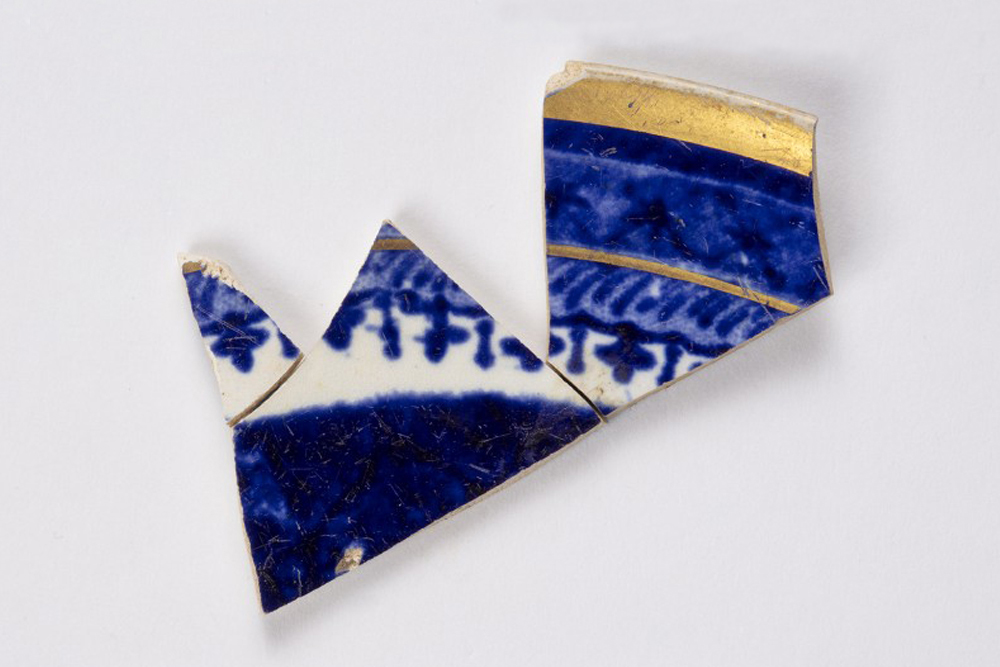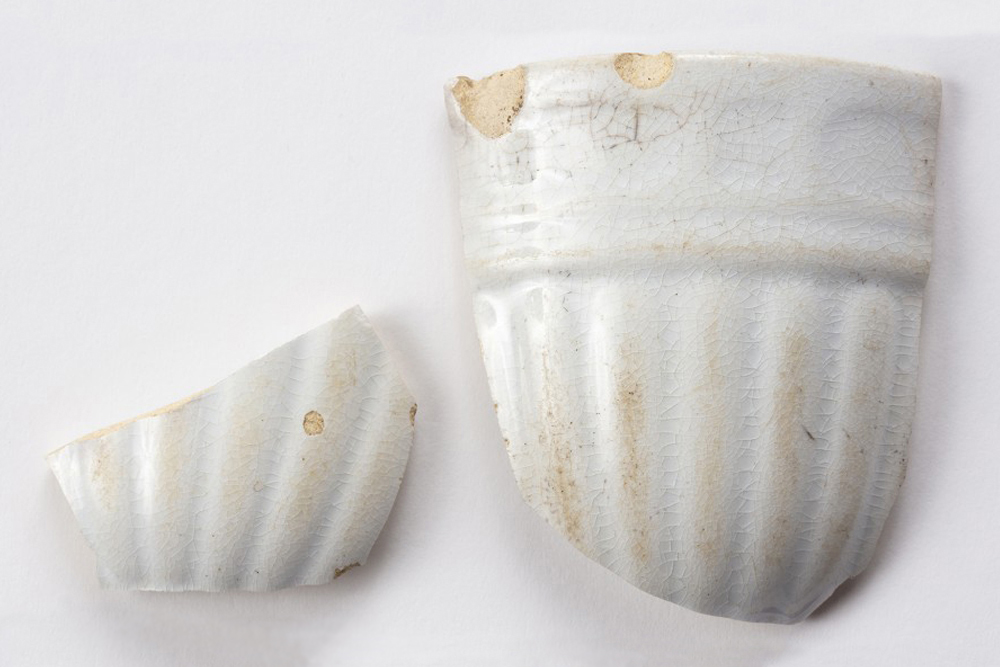Spoon
Today, there are many ways one can interact with spoons. They are used for art, music, food, and tea. When you drink tea, you probably get a small teaspoon to stir your tea, possibly to add in some sugar or honey, and nineteenth-century teaspoons were no different. They were an important part of “tea culture” and how one presented oneself (Moore 1987, 20), and were often made out of copper alloys such as bronze and iron (Moore 1987, 3). Here you will find what a single nineteenth-century teaspoon can say about families in Seneca Village and how their story relates to the general American public of the nineteenth century.
Some spoons were made from or coated with silver from silver coins. These silver coins usually belonged to the wealthy, who, in nineteenthth-century New York City, were largely merchants and large landowners. Teaspoons made with silver demonstrated with, since it meant you had excess silver coins and could afford to go to a silversmith to have a silver spoon made for you. Some teaspoons also had intricate designs, which required more craftsmanship and time, as well as a silversmith with more experience and the skills to make such personalized designs, as opposed to plainer designs that were commonly produced (Turner 1972, 17-23).
Nonetheless, as tea became more popular, the price of tea decreased and became available to those in the middle and working classes (Fromer 2008, 531). Though everyone could drink tea, it was a particularly popular beverage among women. They would gather to drink tea during breakfast or during their afternoon teatime, similar to the tradition in England (Deville 2014). Women were also usually the ones responsible for buying household goods, which, for some, could have included a tea set (Wall 1991, 69-70).
A Teaspoon in Seneca Village
Some teaspoons, unlike the one in Figure 1, were not made out of silver or did not have designs on the handles or on the back, which were usually the most decorated parts. An example of this can be seen in Figure 2. This teaspoon was excavated at the Seneca Village site and found in a yard between the Webster and Phillips houses, meaning it most likely belonged to one of these families. One reason most historians would classify them as working-class is because of their occupations. The head of the Webster household, George Webster, was a porter, and his step-daughter, Malvina, was a domestic worker. William Phillips was also the head of his household, and he was only listed as a “laborer.” No occupation was recorded for his wife, Matilda (NYSC 1855). Therefore, probably neither family could afford to buy many luxury objects, and they had to be careful about which items they chose to splurge on.
Other artifacts excavated from the yard between the Webster and Phillips houses, such as a teapot and saucer, had designs on them. Like many others at the time, they might have wanted to show their wealth through the objects they owned (Wall 1991, 69,79). Teapots were large, eye-catching objects, so the Websters or Phillipses may have wanted to show off in more obvious ways, rather than focusing on smaller objects like the teaspoon. They could have invested more into the meals they shared, or chose to have tea ceremonies with only family and close friends, valuing “community and mutual help” over displaying wealth (Wall 1991, 69). For those the working class especially, tea was also used as a stimulant to help wake faster and work more efficiently. They drank tea that was quick to make, adding sugar and milk to improve taste and make them feel more energized (Deville 2014).
Teaspoons and Manners
Today when you stir tea, you probably find yourself making sure you don’t hit the teacup too hard since you don’t want it to break and, perhaps, to show a certain degree of elegance, especially if you are at someone else’s house. The way a teaspoon and teacup are held and the way one sips one’s tea are influenced by the English manners that Americans perpetuated in society even after the United States became independent (Roth 1961, 64).
The position of the teaspoon was also important. Figure 3, an etching by Robert Cruikshank and published in London in 1835, shows a man who is in distress because he is unaware of proper etiquette and did not put his teaspoon in the right position. Thus, the woman he is with believes he wants more tea and pours him another cup.
Not knowing the proper position and etiquette implied that one was ignorant of how to act, which changed the way one was viewed by society. Similarly, when an Englishman named Joseph Bennett visited Boston, he observed that “the ladies […] visit, drink tea and indulge every little piece of gentility to the height of the mode and neglect the affairs of their families with as good grace as the finest ladies in London” (Roth 1961, 64). In other words, the better manners one had and the more sophisticated and dignified one appeared, the more one was viewed positively by others. This may have been another reason why the Websters or Phillipses owned a tea set and this teaspoon (Figure 2). Even though they may not have been of the highest class, they may have wanted to be able to “properly” show off what they had, not wanting to be looked down upon.

Figure 3. This hand-colored etching by Robert Cruikshank (1789-1856) is titled “A Tea Party or English Manners and French Politeness.” It was published in London in 1835. (Hohenegger 2009, chap. 5)
Parallels to Today
Though there are a wider variety of people who drink tea today, tea is still a very important part of our lives. It can be part of someone’s daily routine, as a way to socialize, and more. We also use the same objects, including teaspoons. Additionally, the way you present yourself and your etiquette at a table while drinking tea can still say more than you think, like the way the position of your teaspoon shows if you are done drinking or if you want another cup of tea. While the way you present yourself on the whole tells a larger story about you, even a small teaspoon can tell part of that story.
Works Cited
DeVille, L., and L. DeVille. 2014. “British Tea–The Classes And The Masses.” The Daily Tea. https://thedailytea.com/travel/british-tea-classes-masses.
Fromer, Julie E. 2008. “‘Deeply Indebted to the Tea-Plant’: Representations of English National Identity in Victorian Histories of Tea.” Victorian Literature and Culture 36, no. 2: 531-47.
Hohenegger, Beatrice, editor. 2009. Steeped in History: The Art of Tea. Los Angeles, CA: Fowler Museum at UCLA.
Moore, Simon. 1987. Spoons 1650-1930. Aylesbury, England: Shire.
New York City Archaeological Repository: The Nan A. Rothschild Research Center. 2020. “Seneca Village.” NYC Landmarks Preservation Commission, New York, NY. http://archaeology.cityofnewyork.us/collection/map/seneca-village.
New York State Census (NYSC). 1855. Census Returns for the Sixth Ward of the City of New York in the County of New York. Manuscript, Department of Records and Information, Municipal Archives of the City of New York, New York, NY.
Roth, Rodris. 1961. “Tea Drinking in 18th-Century America: Its Etiquette and Equipage.” Contributions from the Museum of History and Technology, United States National Museum Bulletin 225, 61-91. Washington D.C.: Smithsonian Institution.
Turner, Noel D. 1972. American Silver Flatware, 1837-1910. South Brunswick, NJ: A. S. Barnes.
Wall, Diana diZerega. 1991. “Sacred Dinners and Secular Teas: Constructing Domesticity in Mid-19th-Century New York.” Historical Archaeology 25, no. 4: 69–81.






